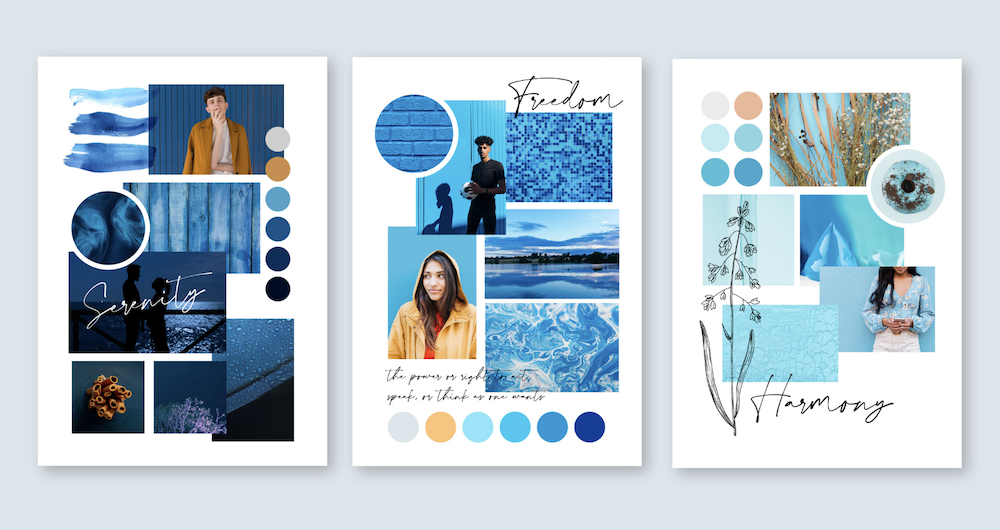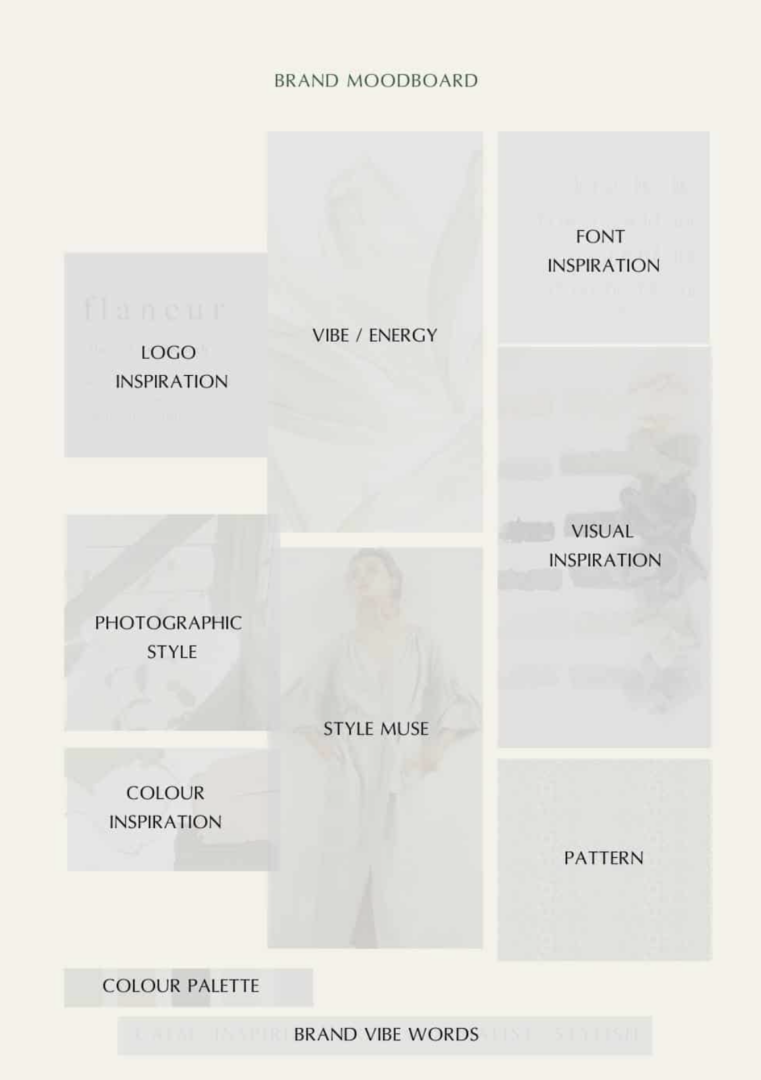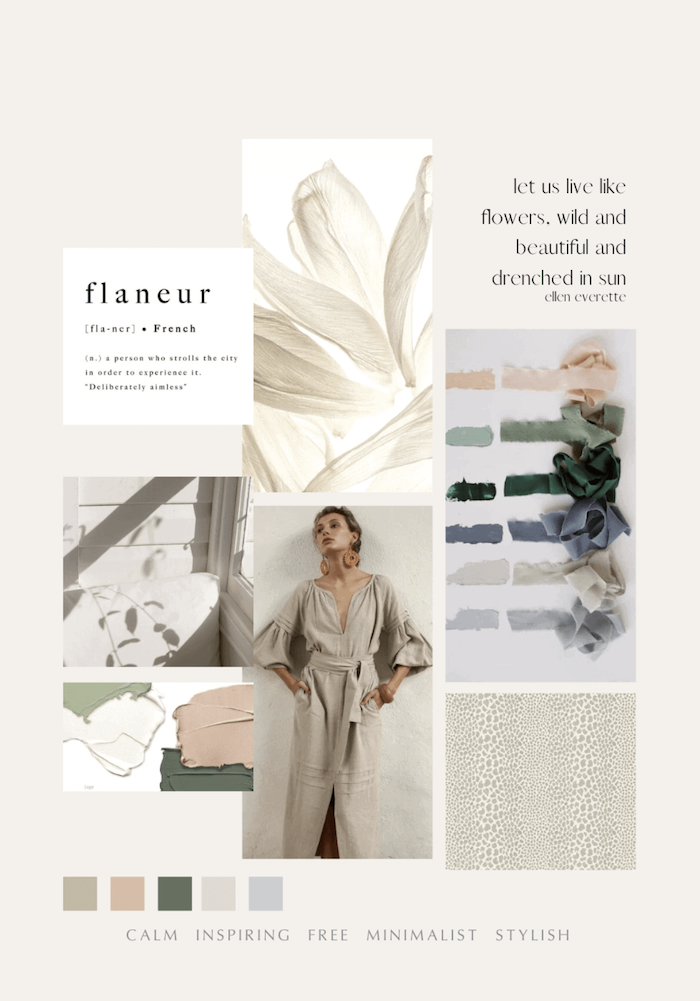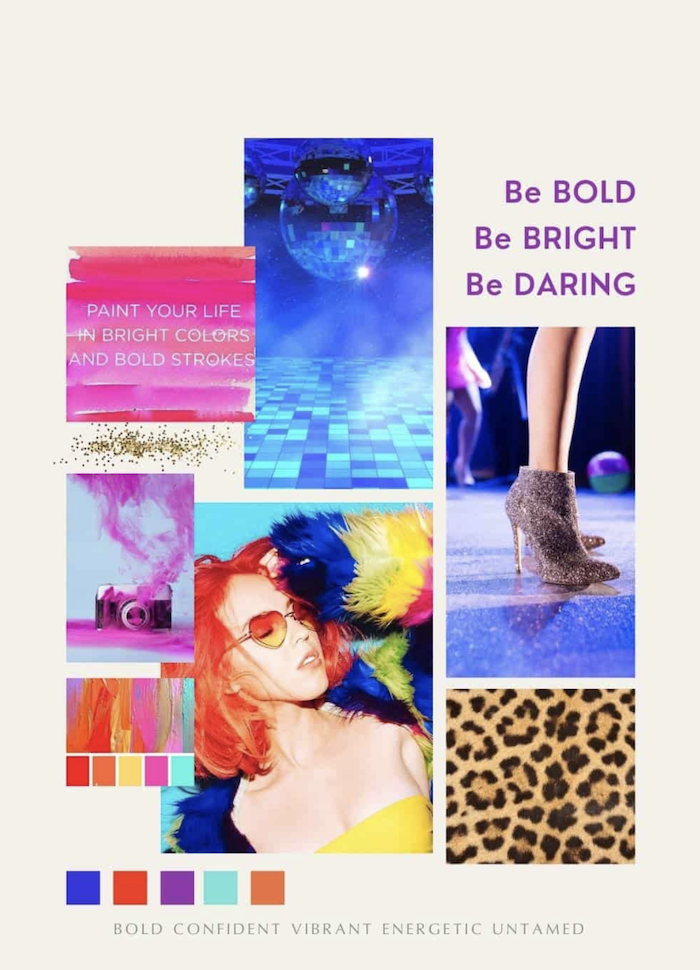What is Mood Board
A mood board is a visual collage or collection of images, colors, textures, and fonts assembled to convey the intended style, atmosphere, or visual direction for a project, such as a website or branding campaign.
Crafting Visual Harmony with Mood Boards
In the realm of design and creative endeavors, the mood board emerges as a silent conductor, orchestrating a symphony of visual elements to evoke emotions, inspire ideas, and set the tone for projects. Beyond its seemingly simple collage of images, colors, and textures, the mood board is a powerful tool that shapes the aesthetic vision and narrative of a project. Join us as we explore the world of mood boards, uncovering their significance, sample use cases, and real-world case studies that illuminate their transformative role in the creative process.

The Language of Visual Inspiration
What is a Mood Board?
A mood board is a curated collection of visual elements, including images, colors, textures, and typography, assembled to convey the intended mood, style, or theme of a project. It serves as a visual reference point that guides and aligns the creative team, stakeholders, and clients on the desired aesthetic direction. Mood boards are particularly popular in design, branding, fashion, and any creative endeavor where visual storytelling plays a crucial role.
The Significance of Mood Boards
Visual Communication
Mood boards facilitate clear visual communication by presenting a cohesive visual narrative. They convey the intended aesthetic, mood, and style more effectively than verbal descriptions alone.
Alignment and Collaboration
Mood boards serve as a unifying reference point for creative teams, aligning them on the project’s visual direction. They foster collaboration and ensure that all stakeholders share a common vision.
Inspiration and Idea Generation
By compiling diverse visual elements, mood boards inspire creativity and spark new ideas. They serve as a catalyst for brainstorming sessions and help in exploring different design possibilities.
Client and Stakeholder Communication
Mood boards are valuable tools for communicating with clients and stakeholders. They provide a tangible representation of the proposed visual direction, facilitating discussions and feedback.
Harnessing Visual Inspiration
Brand Identity Development
- Objective: Creating a visual identity for a new brand.
- Mood Board Elements: Color palettes, typography samples, imagery representing brand values, and visual style references.
- Outcome: A cohesive visual identity that resonates with the brand’s personality, ensuring consistency across marketing materials and communications.
Website Redesign
- Objective: Redesigning a company’s website for a modern and user-friendly look.
- Mood Board Elements: Inspirational website designs, color schemes, font styles, and imagery representing the desired user experience.
- Outcome: A redesigned website that aligns with the intended aesthetic, providing an enhanced user experience.
Interior Design Project
- Objective: Designing the interior of a luxury boutique hotel.
- Mood Board Elements: Inspirational images of luxurious interiors, color schemes, fabric samples, and furniture styles.
- Outcome: An interior design that reflects the desired atmosphere and ambiance, creating a unique and memorable guest experience.
Fashion Collection Launch
- Objective: Launching a new fashion collection for a clothing brand.
- Mood Board Elements: Fabric swatches, fashion photography, color palettes, and visual references representing the collection’s theme.
- Outcome: A cohesive and visually striking fashion collection that aligns with the brand’s vision and resonates with the target audience.
Case Studies: Mood Boards in Action
Nike’s “Just Do It” Campaign
- Challenge: Nike aimed to create a campaign that would inspire and motivate athletes of all levels.
- Mood Board Elements: Powerful and motivational imagery, dynamic typography, and iconic visuals representing the spirit of athleticism.
- Outcome: The “Just Do It” campaign became one of the most successful and enduring brand campaigns, capturing the essence of determination and empowerment.
Apple’s iPod Design
- Challenge: Apple sought to design a groundbreaking portable music player.
- Mood Board Elements: Clean and minimalist design references, innovative technology imagery, and a focus on user experience.
- Outcome: The iPod revolutionized the music industry, with its sleek design and user-friendly interface setting a new standard for portable media players.
Coca-Cola’s “Share a Coke” Campaign
- Challenge: Coca-Cola aimed to create a personalized and engaging marketing campaign.
- Mood Board Elements: Imagery of people sharing moments, personalized packaging designs, and vibrant color palettes.
- Outcome: The “Share a Coke” campaign involved personalized labels with individual names, driving consumer engagement and creating a sense of connection with the brand.
Process Overview
Visual Representation
Curates visuals that capture the desired mood or theme.
Style Exploration
Explores various design elements and aesthetics.
Client Communication
Visual tool for discussing design direction and preferences.

Navigating Challenges: Maximizing the Impact of Mood Boards
While mood boards offer immense creative potential, addressing challenges ensures their optimal impact:
Clarity of Concept: Ensure that the mood board effectively communicates the intended mood, style, or theme. Clear annotations or descriptions can provide context and guide the viewer in interpreting the visual elements.
Balancing Diversity: While incorporating diverse elements is key to sparking creativity, maintaining a cohesive overall theme is essential. Striking the right balance ensures that the mood board remains focused and aligned with the project’s objectives.
Adaptability to Feedback: Mood boards should be adaptable to feedback. Encourage open discussions with the creative team, stakeholders, and clients to incorporate constructive feedback and refine the visual direction.
Consistent Branding: When creating mood boards for branding purposes, ensure consistency with the brand’s identity and values. Aligning the visual elements with the brand’s personality maintains a strong and recognizable brand presence.
Weaving Visual Narratives for Creative Triumphs
In the tapestry of creative endeavors, mood boards stand as the weavers of visual narratives, guiding projects from inspiration to fruition. Through sample use cases and case studies, we’ve witnessed the transformative impact of mood boards—from shaping iconic brand campaigns like Nike’s “Just Do It” to influencing the design of revolutionary products like Apple’s iPod.
As the creative landscape continues to evolve, the art and impact of mood boards remain timeless. They are the silent collaborators, the visual storytellers, and the catalysts for inspired creations that resonate with audiences on a profound level. In the symphony of creative triumphs, mood boards are the conductors, orchestrating visual harmony and setting the stage for projects that captivate, inspire, and endure.

Importance
Visual Guidance
Sets the tone and style for the design direction.
Alignment
Aligns stakeholders on the intended visual direction.
Inspiration
Inspires and communicates the intended mood or theme.

Your Business Benefits
Clear Vision
Helps clients visualize the intended design aesthetics.
Alignment and Agreement
Ensures alignment between client and design team.
Inspiration Source
Provides inspiration for the overall design direction.
Your Business Strategies
Collaboration
Collaborate with clients to gather preferences and feedback.
Versatility
Curate diverse elements to explore various design directions.
Clear Communication
Use the mood board to articulate design concepts.

